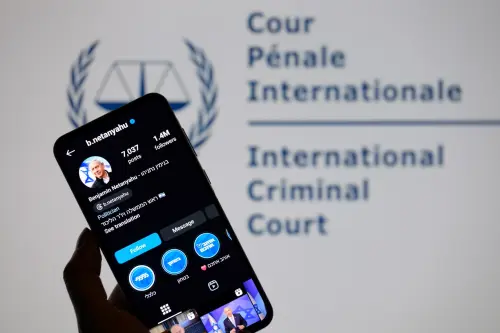President Trump’s stark warning that the United States was prepared to “totally destroy North Korea” attracted the most attention during his first foray into the world of U.N. General Assembly politics. In the General Assembly Hall, his strong defense of sovereignty attracted praise and polite yawns in roughly equal measure. But what was really interesting about Trump’s first two days in New York is that three distinct Trumps were in view.
President Trump’s began his maiden U.N. voyage on Monday at an event organized by the United States to promote U.N. reform. This was a gamble; as little as a week ago, the United States had no other co-signers for the outcome document for this event, and it risked looking like a U.S. attempt to run roughshod over the reform process. But U.S. diplomacy prevailed, and in the end convinced more than 100 countries to sign on. The leaders were pleasantly surprised by the quality of Trump’s remarks. Trump made a clear connection between his primary foreign policy concern—better burden sharing—and the mandate of the U.N. He played his strongest foreign policy card: the fact that he’s right that current international arrangements for burden-sharing are badly out of date. Professional and on script, Trump also threw his weight behind the somewhat embattled U.N. Secretary-General António Guterres, and generated support for Guterres’ reform agenda. This was Trump #1: Nikki Haley’s Donald Trump.
Tuesday was the big day on diplomacy’s largest stage, against the shoddy but iconic green marble rostrum he famously once derided.
The 41-minute speech unfolded in three parts.
First, Trump offered a robust defense of a concept that so far has seemed absent from President Trump’s rhetoric: the notion that American power has served, at least historically, to preserve the peace between great powers and international prosperity. He acknowledged that authoritarian states pose a threat to American values. He even invoked the spirit of the Marshall Plan, even if he fumbled over its “three beautiful pillars.” He went on to invoke the wiser tenets of traditional Republican foreign policy:
“It is an eternal credit to the American character that even after we and our allies emerged victorious from the bloodiest war in history, we did not seek territorial expansion, or attempt to oppose and impose our way of life on others. Instead, we helped build institutions such as this one to defend the sovereignty, security, and prosperity for all.”
This was H.R. McMaster’s Trump, and probably previewed the direction of Trump’s forthcoming National Security Strategy.
Trump then dwelled on sovereignty. The left and right took the bait. Conservatives thrilled to the defense of sovereignty; liberals rued a perceived abandonment of human rights and democracy. Yes, there was a facial contradiction between Trump’s defense of sovereignty on the one hand and a call for intervention in Iran and North Korea, but organized hypocrisy has long been sovereignty’s most defining characteristic. The sovereignty of small states has always been permeable, while the sovereignty of major powers is far less so. And the notion that there’s a deep contradiction between sovereignty and cooperation is a red herring.
Towards the end of the speech he had a lot of kind words about the U.N. and other international organizations, and their role in peacekeeping and humanitarian assistance. He noted that the United States pays 22 percent and more (which is true: in both peacekeeping budgets and voluntary accounts the United States pays far more than 22 percent of the costs). But he acknowledged that the objectives are worthy and, when fulfilled, entirely worth the cost. This was Haley’s Trump again.
[R]arely have the competing versions of a president’s strategy been on such vivid and contrasting display as during President Trump’s first U.N. week.
And then there was the middle of the speech. Trump warned that he had already taken his decision on the Iran nuclear deal (leaving little room for doubt on what that was). He repeated his Twitter description of Kim Jung-un as “rocket man.” He called out rogue regimes. And he said that the United States was prepared to “totally destroy” North Korea “if [the United States] is forced to defend itself or its allies,” while also arguing that denuclearization was the only acceptable pathway forward, causing some to suggest he had linked failure to denuclearize to the threat of annihilation. This was ambiguous at best. Together with his tough Iran rhetoric, this version of President Trump had a small band of supporters crowing with joy, while a much wider band of Republicans and allies were left deeply worried. This was Donald Trump’s Donald Trump.
No president is entirely coherent in their approach, and every president is in part a reflection of the competing advice of advisors around him. Witness the contrast between President Obama’s instinct to pull back in Afghanistan versus his decision to intervene in Libya. But rarely have the competing versions of a president’s strategy been on such vivid and contrasting display as during President Trump’s first U.N. week. His U.N. foray is evidence that the Haley/McMaster version is gaining ground; but also, to misquote Aaron Sorkin, that Trump will be Trump. How these competing versions and visions of his foreign policy play out in the weeks and months ahead will profoundly shape both American strategy and international (dis-)order.
The Brookings Institution is committed to quality, independence, and impact.
We are supported by a diverse array of funders. In line with our values and policies, each Brookings publication represents the sole views of its author(s).





Commentary
A tale of three Trumps
September 21, 2017